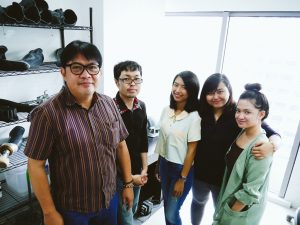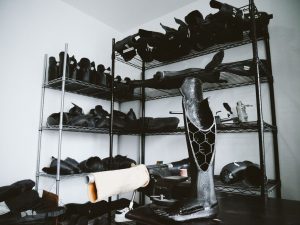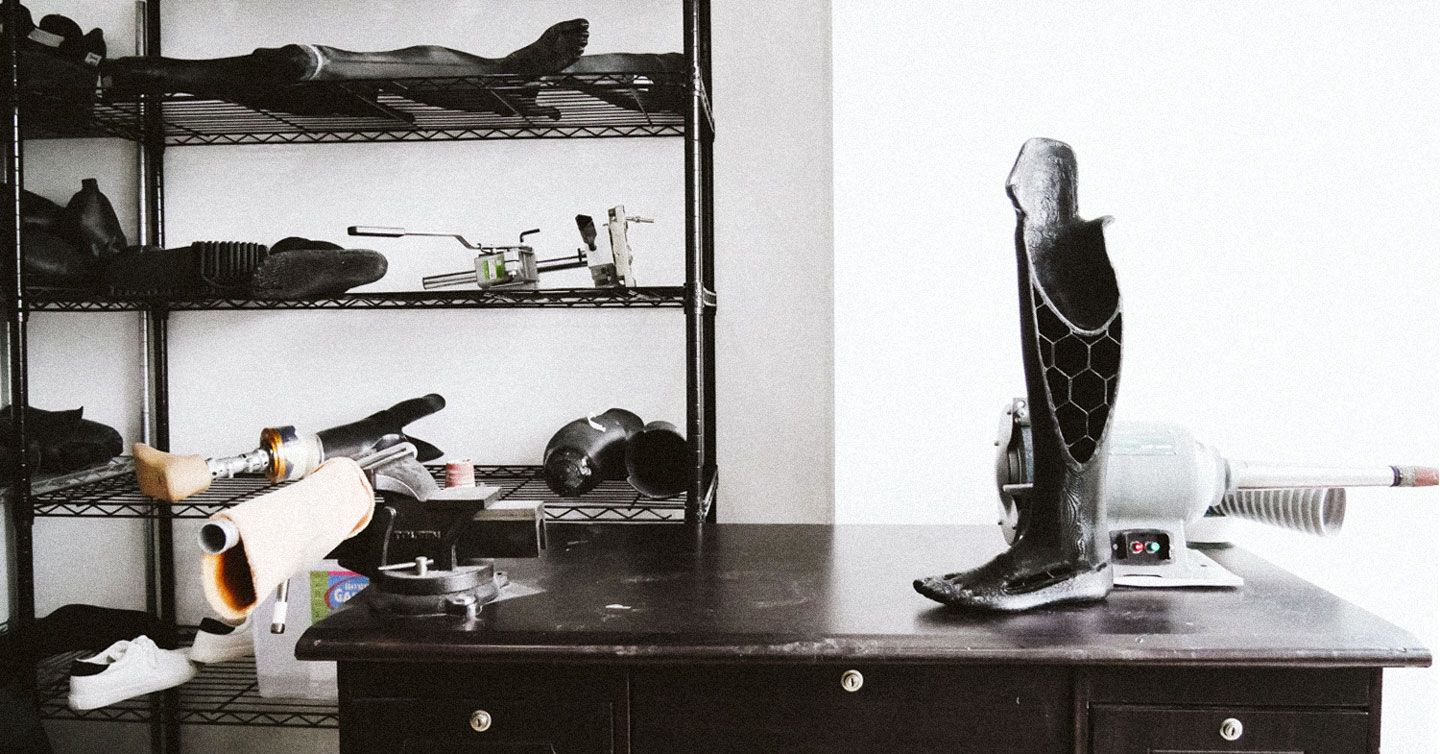MANILA, PHILIPPINES – What would usually take months to create in conventional manufacturing has been shortened drastically by 3D Printing, which is good news for any designer and most especially to the creators of a new kind of prosthesis who can finish an entire prosthetic leg in three days.
The location of Instalimb Solutions feels quite intimidating to be honest. Centuria Medical as a building feels very posh, and unlikely to house something as accessible as Instalimb. One thing for sure, however, is that the people inside make the experience comfortable for everyone. They approach each case with a friendly demeanor and the willingness to educate should patients have any questions. And upon talking to the staff, the choice in location was also very deliberate as they needed higher energy and safety requirements for the equipment they brought in from Japan.

Right now, the team is made up of a few doctors and technicians, each one with a specific task as a patient comes in. They also have partners in Japan, but most of the legwork is done here in Makati.
Inside the clinic is a small briefing room where the process is explained, and then 3D scanners that map out an amputee’s stump. There’s also a lab with windows that grant patients full view of how the prosthetics are made via 3D printing. It’s very interesting to see how the process goes, and impressive to know that once a scan is made, an actual leg can be created within three business days. Mr. Larry Laroza, the Sales Executive Manager for Instalimb Solutions Philippines, Inc. proudly shares they can even go faster, but there has been more demand, and they also do rigorous testing before a patient can pick up the finished product.
Lightweight and Durable
While science fiction films will have us dreaming of robotic prosthesis, and in fact there are some of them out there already, Instalimb has a more practical approach to their prosthetic legs. The structure itself is a solid but lightweight blend of poly lactic acid mixed with carbon fiber, with a softer heel and foot to make walking easier.
How the legs are built – from the build on the outside and structure on the inside – was a result from an extensive study a team of doctors made here in the Philippines who carefully examined how a patient would walk and how current conventional prosthetics affect the body. While Instalimb has already begun releasing products in the market, they say that they continue to record any feedback and input from their patients to further improve what they have available. In fact, Instalimb has updated their design several times since their launch earlier last in 2019.

“The material has been tested as durable, same as the conventional materials but weighs lighter than conventional materials. The main difference with conventional prosthesis are: no metal parts, and waterproof. The design and shape is like a good leg – aesthetically pleasing, custom-made based on patients actual stump shape, and easy to use,” shared Laroza.
To add to that, the prosthetic leg itself is modeled after the person’s other leg, and the stump itself is scanned so that the cuff that will be used to wear the prosthetic will fit perfectly.
The leg itself is one block with no moving parts apart from the softer heel. Inside is where it gets even more interesting. The leg looks solid, but the weight isn’t as heavy as you’d expect. As it turns out, the prosthetic is somewhat hollow, with a honeycomb pattern inside that helps keep its integrity. Honeycombs, which are hexagonal in nature, is a structure that engineers have observed through biomimicry as the most efficient packing shape, able to support weight far better than any other shape. The structure then helps keep the leg strong and relatively lightweight at the same time.
The legs are slowly printed in a machine, and then the softer heel and foot is attached. Staff members also ask the patients to leave behind their favorite pair of shoes so they can see if it fits well. In case of any deformation on the leg is detected, they immediately throw it out and start again. And since the legs are made of plastic, they currently hold onto the discarded material while they look for a partner who can reprocess or recycle them.
Way more affordable
While most conventional prosthetic legs have more mobility features like an axis at the ankle that helps you move, there are other benefits to having a 3D printed one instead, and the most attractive one perhaps is the cost and efficiency of making one.
The plastic blend is far more affordable than the materials used for conventional ones, and the process is a lot easier too. With the technology that was shipped in, and the efficient process used by the Instalimb team, they are able to produce legs that cost around 30,000 pesos, far cheaper than most types that cost about twice as much or even more.
Finding a way to drive the cost down as much as possible was a mission for the group too, since their goal is to make prosthetic limbs accessible to those who can’t afford them. They have fortunately been able to achieve that so far and is currently exploring different payment schemes to make the price even easier to afford by people from all walks of life.
In return, patients are asked to visit the clinic again every 30 days for the first three months so they can further their studies.

Talking to patients in the clinic at the time, as well as watching testimonies from their past patients, it’s clear that their mission has somewhat gained considerable success already. Some patients who have never worn prosthetic legs before were able to ditch their crutches and go back to performing daily tasks at home with ease and no more bruises in their underarms. There were those who were able to go back to things like biking, some even ask for more lift so they can wear high heeled shoes, and some excited to hear they can start wearing jeans and leggings again since the prosthetic would fit perfectly.
The team believes their current design is far from perfect and can still be optimized, which to be honest is relieving to hear because it means they will keep their studies going until they build the best one that they could.
Instalimb is located at Unit 2512, Centuria Medical Makati, Kalayaan Ave, Makati, 1210 Metro Manila. For inquiries, you may call (02) 8529 0144.
















